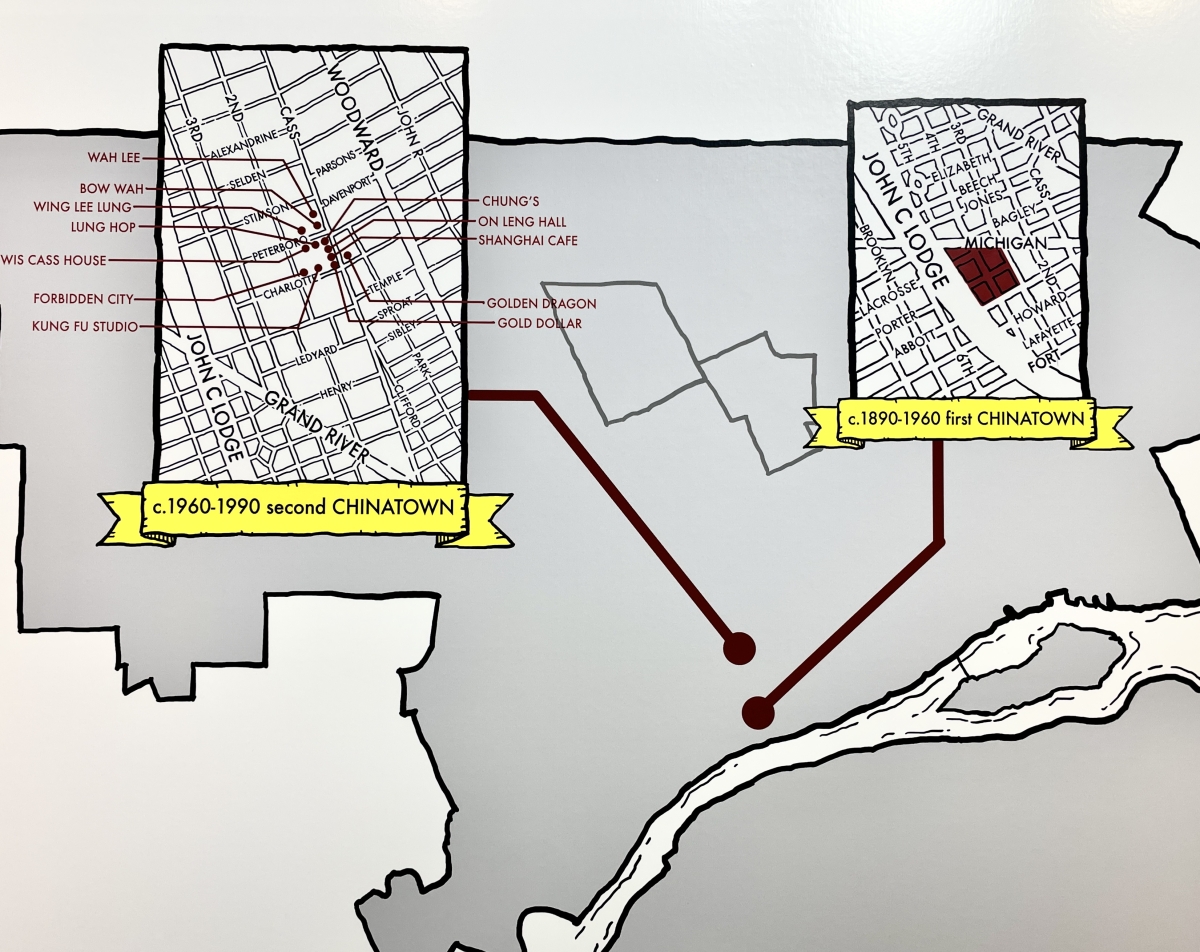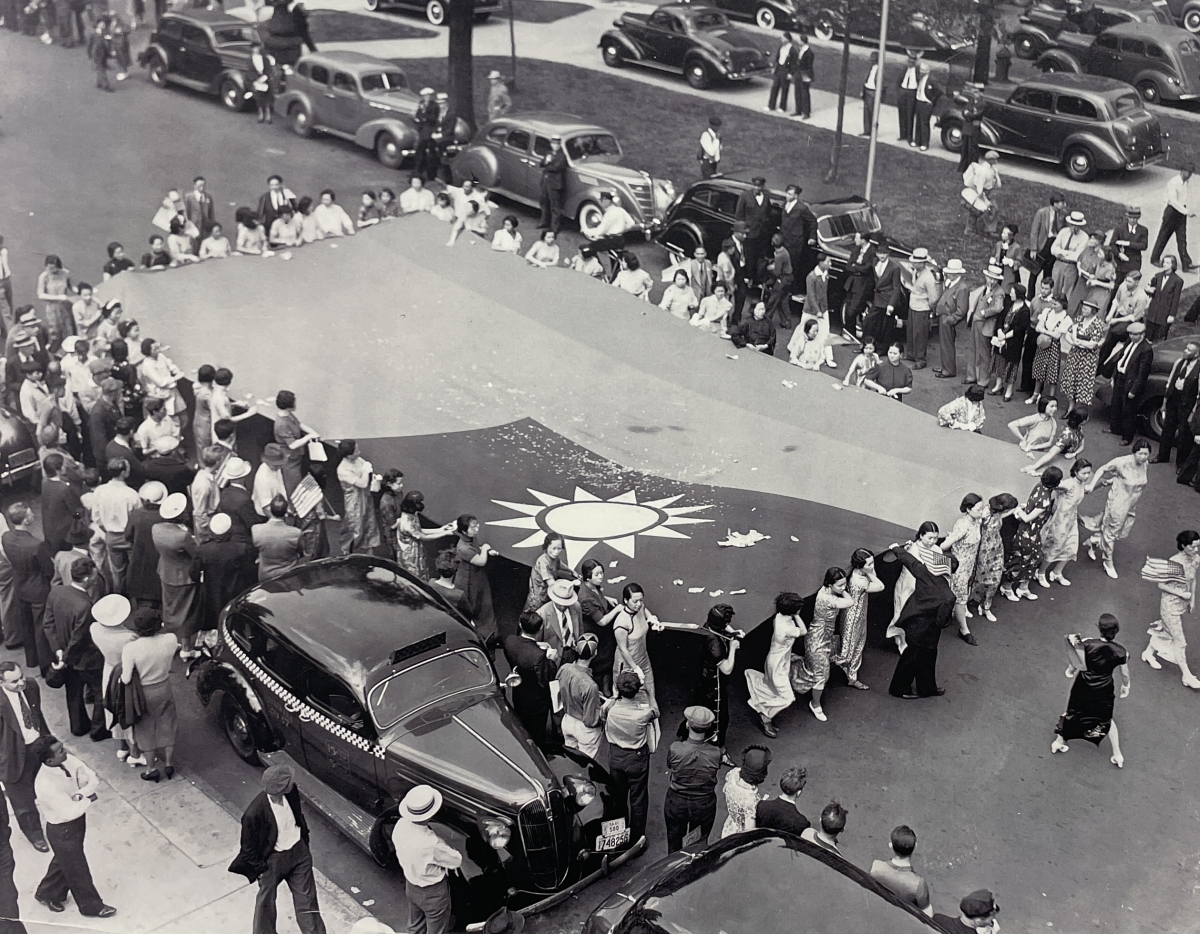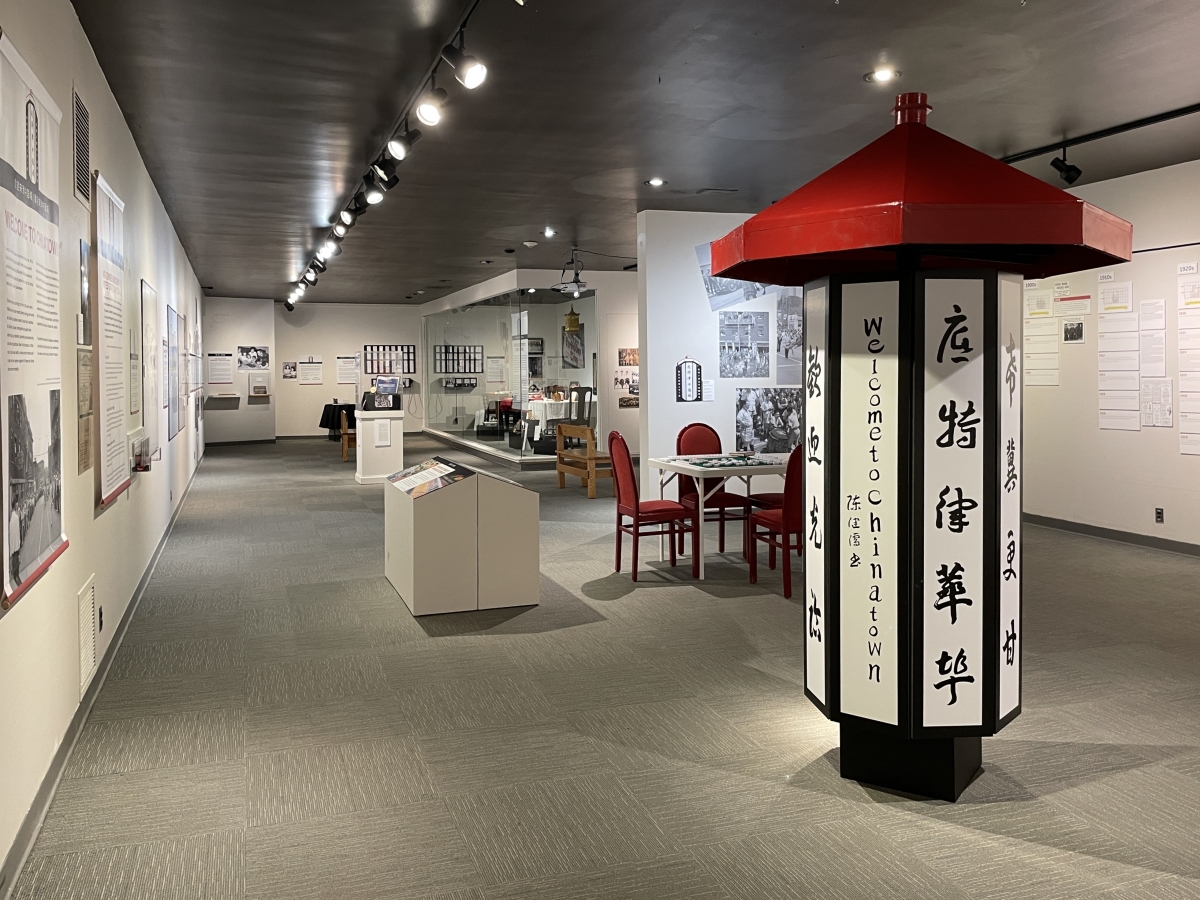Did you know that Detroit had two official Chinatowns?
The first recorded Chinese immigrant to Detroit, a man named Ah-Chee, lived on Gratiot Avenue in 1872; he was the first of many. Early Chinese Detroiters came from the city of Taishan, in Guangdong province. Primarily single men, they crossed the Pacific Ocean by boat and landed in California before making their way to Detroit by train – completing a nearly 8,000-mile journey. Once settled, these newcomers would often travel back to China to marry and sponsor family members to come join them in Detroit.

Third and Porter
The first concentration of Chinese immigrants in the city was near Grand Circus Park, but in 1917, the On Leong Tong, or Chinese Merchants’ Association, established a permanent space for Detroit’s own Chinatown near the corner of Third and Porter Streets, just west of downtown.
By the 1930s, the neighborhood was a flourishing, bustling community of restaurants, laundries, shops, and other businesses. Chinese families often lived directly above or behind their family business, forming an ethnic enclave where Chinese Detroiters could speak their native language, buy familiar groceries, create community, and make a living.
Residents of this first Chinatown remember attending church and Chinese school, watching Chinese opera and movies,and traveling to Belle Isle to picnic on weekends with hundreds of other Chinese families. Ultimately, the city’s Chinatown was both a home-away-from-home anda safe haven from racism against Chinese and Asian Americans.

Women bear flag filled with coins for war relief, 1938. Courtesy of Walter P. Reuther Library Archives of Labor and Urban Affairs, Wayne State University, Detroit News Staff.
Cass Corridor
Affected by the same urban renewal and “slum clearing” project that destroyed the Black communities of Black Bottom and Paradise Valley in the 1950s, Detroit’s first Chinatown was forced to hastily relocate inthe early 1960s.
Chinatown was rebuilt in the Cass Corridor, bordered by Cass Avenue, Peterboro Street, Second Avenue, and Temple Street. Chinese Detroiters continued to gather in this second Chinatown for food, shopping, church, school, and community events, and carried on the tradition of gathering at Belle Isle on Sundays.
While the population of Detroit’s Chinatown dwindled in the decades after the relocation to the Cass Corridor, the Chinatown pagoda still stands at Cass and Peterboro to honor the history of Detroit’s Chinatown community.

Left: Ngan Oi Woo Wong in Shanghai Cafe, c. 1970. Courtesy of the Lim Family. Right: Tom Chin with three grandsons Chris, Curtis, and Craig in front of Chung's Cantonese Cuisine, c. 1971. Courtesy of the Chin Family.
Learn more
Now open in the Detroit Historical Museum’s Robert and Mary Ann Bury Community Gallery, the Detroit’s Chinatowns exhibition tells these stories using artifacts from Chinatown residents and businesses, oral histories gathered from prominent Chinatown families, and a timeline of Chinatown events. The community-curated exhibit will run through March 24, 2024.
